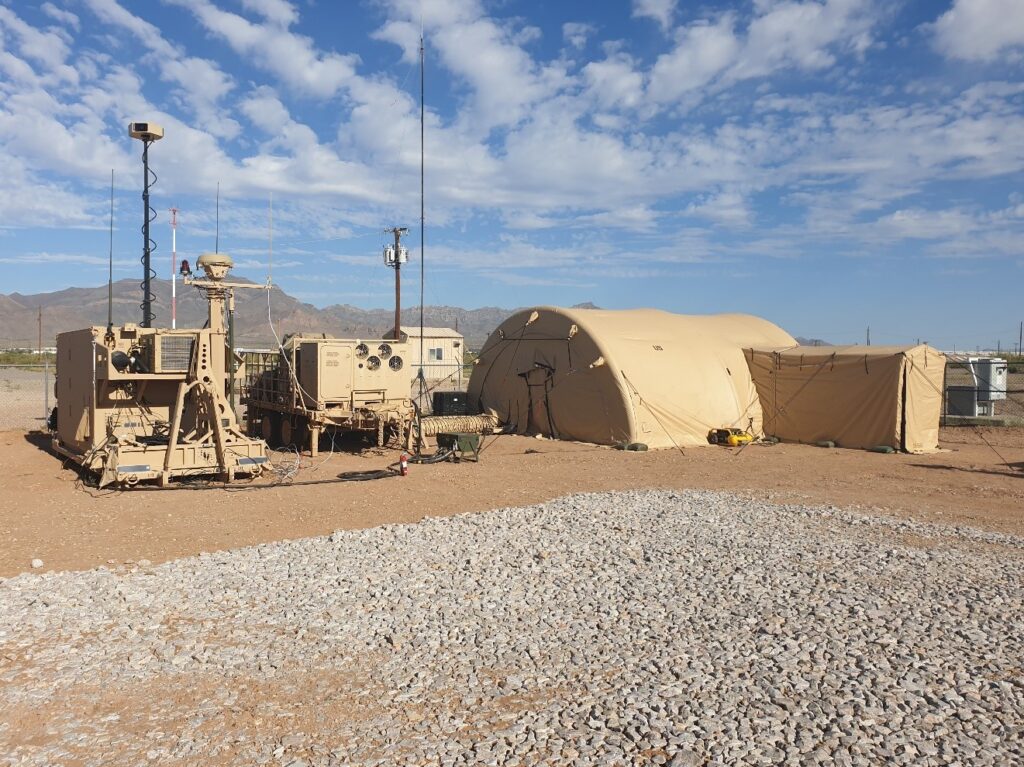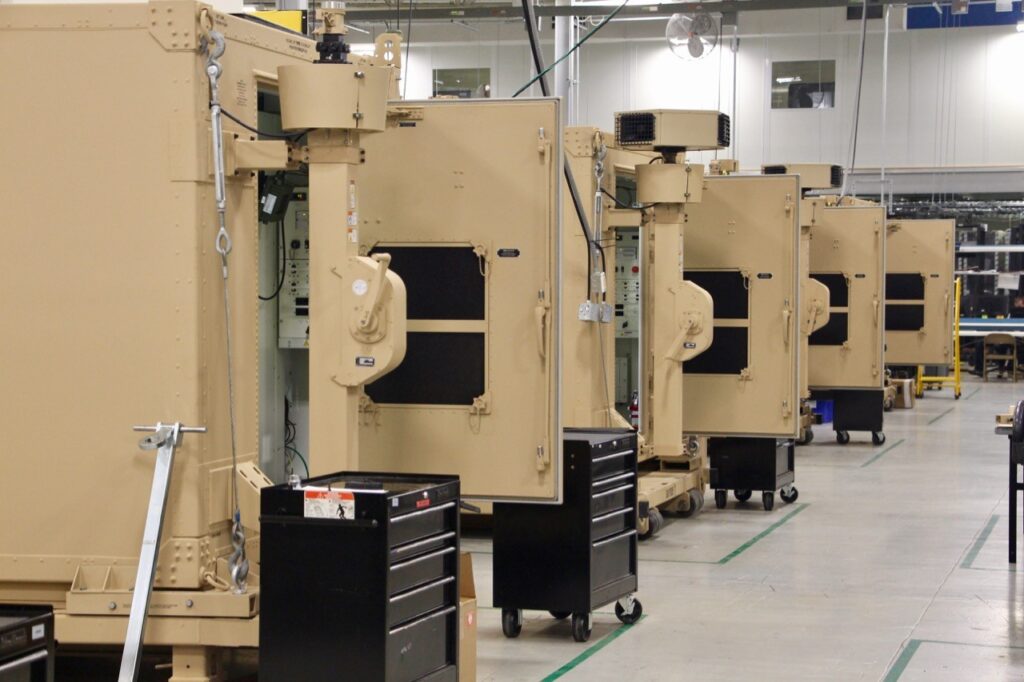
Photo: US Army. The Integrated Air and Missile Defense Battle Command System utilizes multiple sensors and effectors to extend the battlespace, engage threats with 360° protection, and increase survivability by enabling early detection and continuous tracking
As the U.S. military shifts from a focus on asymmetric threats to challenges from peer and near-peer military adversaries, pathfinder technologies and digital transformation are critical to success. They are key elements of the military’s doctrine for all-domain operations, which requires quick creation and deployment of a new, open, and integrated communications architecture with advanced processing capabilities. These technologies are essential to pulling together disparate data from across the DoD and sharing it on-demand with warfighters that need it across all warfighting domains and out to tactical units at the edge.
In this Q&A with Kenn Todorov, Sector Vice President and General Manager, Combat Systems and Mission Readiness, Northrop Grumman Defense System Sector, we discuss the enabling technologies for all-domain operations, how they connect with technologies of the 4th Industrial Revolution, and suggestions for the new Biden Administration and secretary of defense.
Breaking Defense: What are the technological challenges associated with a transition from anti-terror activities to a peer/near-peer competition in the Great Power competition?

Kenn Todorov, Sector Vice President and General Manager, Combat Systems and Mission Readiness, Northrop Grumman Defense System Sector.
Todorov: We are defending against high-volume, multi-mode, multi-azimuth attacks and the need to be able to simultaneously strike multiple, time-sensitive targets. If we, heaven forbid, get into a conflict with a peer or near-peer competitor, it’s largely going to be a fight against a mirror image of ourselves. We’ve been preparing for that but we need to double down on our efforts because the volume of threats that we may see in any given area is going to be extreme.
The threat has advanced in three different ways: quantities, which means simply that there are a greater number of threats to deal with; qualities, meaning longer ranges, better lethalities, harder to detect, and lower radar cross sections; and diversity, which is really what sets this problem apart from those of the past because these are a whole range of threats that look like nothing before. They fly and come at you differently, and potentially all at the same time.
Our peer and near-peer competitors have accelerated at a fast pace in those three areas. Now it’s our challenge to continue to outpace the rise of missile, air, and cyber threats across all domains. In addition, defeating these threats will require taking advantage of left-of-launch opportunities to strike time-sensitive targets at scale, which will require global, real-time situational awareness coupled with prompt strike.
Breaking Defense: What are the enabling technologies/capabilities like scalability and resiliency needed to realize the benefits of all-domain connected battlespace and JADC2?
Todorov: The enabling technologies are found in the architectural framework that should be designed first. You’re familiar with the idea of a joint kill web, and that’s really enabled by an interconnected web that starts with an architectural framework with modular open systems like our Integrated Air and Missile Defense Battle Command System, or IBCS. It is an Army network-enabled command-and-control system on which multiple sensors and shooters ride upon. Let me give you examples of how both scalability and resilience are built into it. An example of enhancing resilience is if one sensor goes down or is subject to an electronic warfare attack, or if a Patriot missile battery simply doesn’t fire the way it should, the IBCS network automatically looks for another sensor in that kill web to take care of the threat that may be flying through the battlespace. On scalability, if there are two or more weapons that can engage an incoming threat, the system determines which one can take the best shot and only that one engages, thus saving magazine for subsequent attacks.
So the technology for this network of networks starts with an architecture-first approach. When you design the network and the architecture first, it’s relatively easier to build in scalability and resiliency. But if you start with an architecture that does not have the ability to easily add things to it and automatically adapt, it becomes a much harder problem because you’ve got proprietary and connectivity issues, and ultimately ‘wasted shots’ and an inability to scale up. Designing an architecture from the start that is both modular, open, and can accept these different, disparate systems is a much more sound approach.

In January, IBCS received authorization for low rate initial production following a successful Milestone C decision for the program.
Breaking Defense: How do 4th Industrial Age Technologies like artificial intelligence/machine learning, 5G, and cloud work together to create the overmatch that the U.S. military needs? How will they interact and play in an all-domain environment?
Todorov: These technologies are first and foremost in our mind, and we are investing in or teaming with others on all of these. It goes back to where we started this conversation, which is the threat—almost a potentially overwhelming battlespace characterized by complex attacks. The human brain, as sharp as it may be, is not going to be able to process all of the information required, nor in some cases will it be able to take action in an appropriate matter of time.
Through our work in IBCS, we’re investing in a capability called the Master Mission Manager (M3) that really functions as the brains to coordinate, deconflict, and synchronize offensive strike and defensive fires. This optimizes effects without having to replace existing or in-field battle managers. The M3 also incorporates existing sensors and weapons. We then bring in tools from AI and ML to make quick recommendations to the users on how best to deal with the volume and types of attacks coming at them. All of this creates the overmatch, to use your term, that provides warfighters an advantage. The other really exciting thing is that this means our customers don’t have to start from scratch.
Breaking Defense: Where do you suggest that the new administration and defense secretary place an emphasis to put connected battlespace and JADC2 on a good footing for success?
Todorov: Number one, it is going to take a collective. And I think it is also important to note that we can’t discard existing systems in the battlespace. From a fiscal perspective and from a strategic and sustainability perspective, JADC2 must utilize existing sensors and weapons and take full advantage of new and emerging systems, too. it’s simply impossible to claim that industry alone has all the answers for success in all-domain operations. It will require the entire Defense ecosystem to solve.
Second, I would go back to the need for an architectural framework first. This is the cornerstone of an all-domain battle-management C2 fire control system that not only defends, but can handle offensive fires and long-range strike, as well. I believe the best strategy is to develop and create a joint tactical integrated fire control network using existing networks that the services, and taxpayers, have already invested in that work well in their own domains. From there we then extend them to the large battlespace through the open and modular, architectural framework that I described earlier. At Northrop Grumman, we’re developing a capability we’re calling Joint Integrated Fires, Command, Control, and Communications (JIFC3) to do just that.
And thirdly, let’s not lose sight of the fact that this is an all-domain problem to include the space and cyber domains. So we’ve got to make smart decisions and choices on all the connected systems to include the sensor architecture, particularly for some of these threats that can be seen best through space sensing such as a hypersonic threat. At the same time, the network architecture must also include innovative sensing systems for the more traditional domains of air, land, and sea because the problem can overwhelm us very quickly. We’ve got to think and act anew about how we can incorporate the technologies that you mentioned earlier like AI, ML, and the cloud into the all-domain architectural framework.























